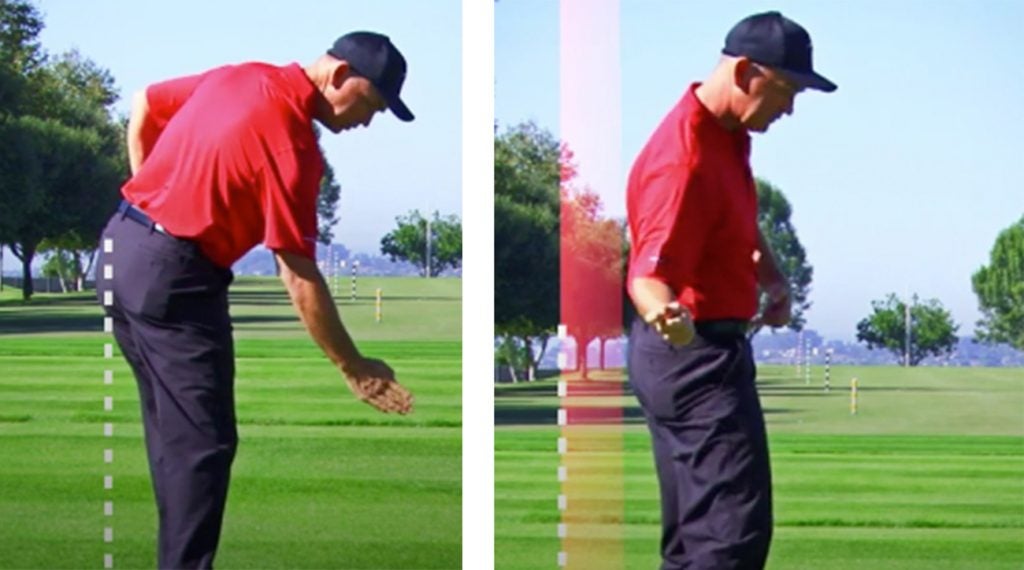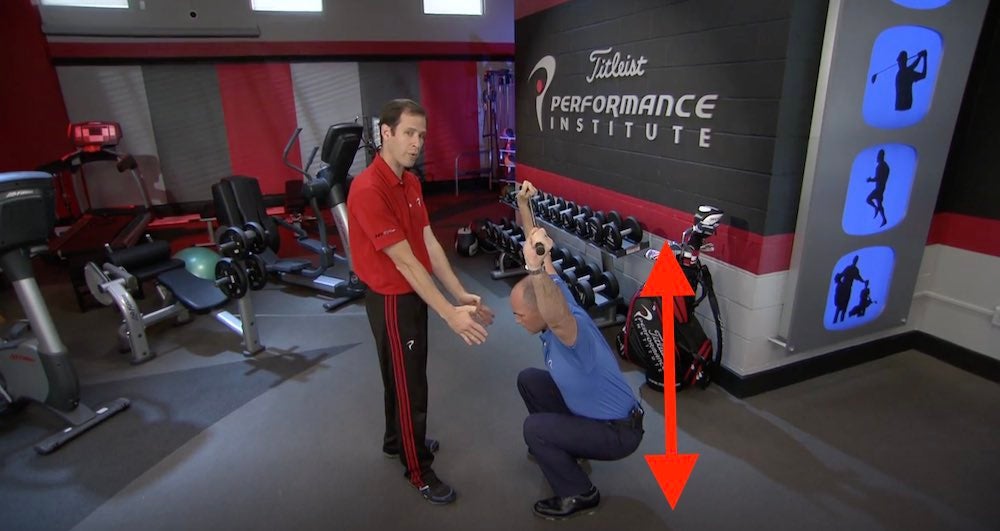 2 effective pre-round stretches to get loose before you tee off
2 effective pre-round stretches to get loose before you tee off
Do these 2 at-home exercises to fix your golf swing’s early extension

Some things that are non negotiable in golf, the ball sits on the floor for most shots, and the clubs don’t vary in length or lie during swing to adjust. We, the golfer, have to adjust our stance, setup and body position to accommodate the club and lie while we swing.
At the top of the backswing most players have elevated the grip around seven feet in the air, above and behind their head. From there, the grip needs to get back down and in front of the golfer’s thighs in about .25 seconds in order to hit the ball.
Early extension is a phrase you might have heard before. It’s what we call a common swing fault whereby your hips thrust towards (or move closer) to the ball on the downswing.
And that’s a problem.

By extending the mid part of our body toward the ball at any point in the backswing or downswing, golfers run out of room to get the handle back down in front of them. Some golfers, depending on skill level, can compensate somehow, but the result is exactly that: a compensation.
A high handle through impact usually leads to loss of face control, lack of power due to body interfering with arm speed and stalling of the pivoting motion (because the pivot was typically too aggressive in start down).

ADVERTISEMENT
How can you avoid early extension? Here are two simple excer
1. Overhead deep squat
With your arms extended over your head approximately shoulder width apart, have your feet shoulder width too. Squat until your hips get equal to or below your knees and then stand back up. This tests shows flexibility in your ankles, knees, hips thorax extension, arm extension, it also is a strength test. The brain doesn’t want you to fall backwards so your body will compensate by pitching forwards as you descend into your squat or by not descending far enough. You may also find your heels come off the ground as you pitch forward.

2. The Pelvic Tilt Test
Core control and hip movement although hard to recognize in a golf swing is easily identified in the “pelvic tilt” test. From a typical golf posture can you tilt your belt buckle downwards and then tilt it backward. If you find this movement difficult or your find your knees move excessively, your upper body moves upwards instead of your pelvis tilting, your ability to maintain some forward bend while turning and tilting is highly unlikely!
To receive GOLF’s all-new newsletters, subscribe for free here.

ADVERTISEMENT






